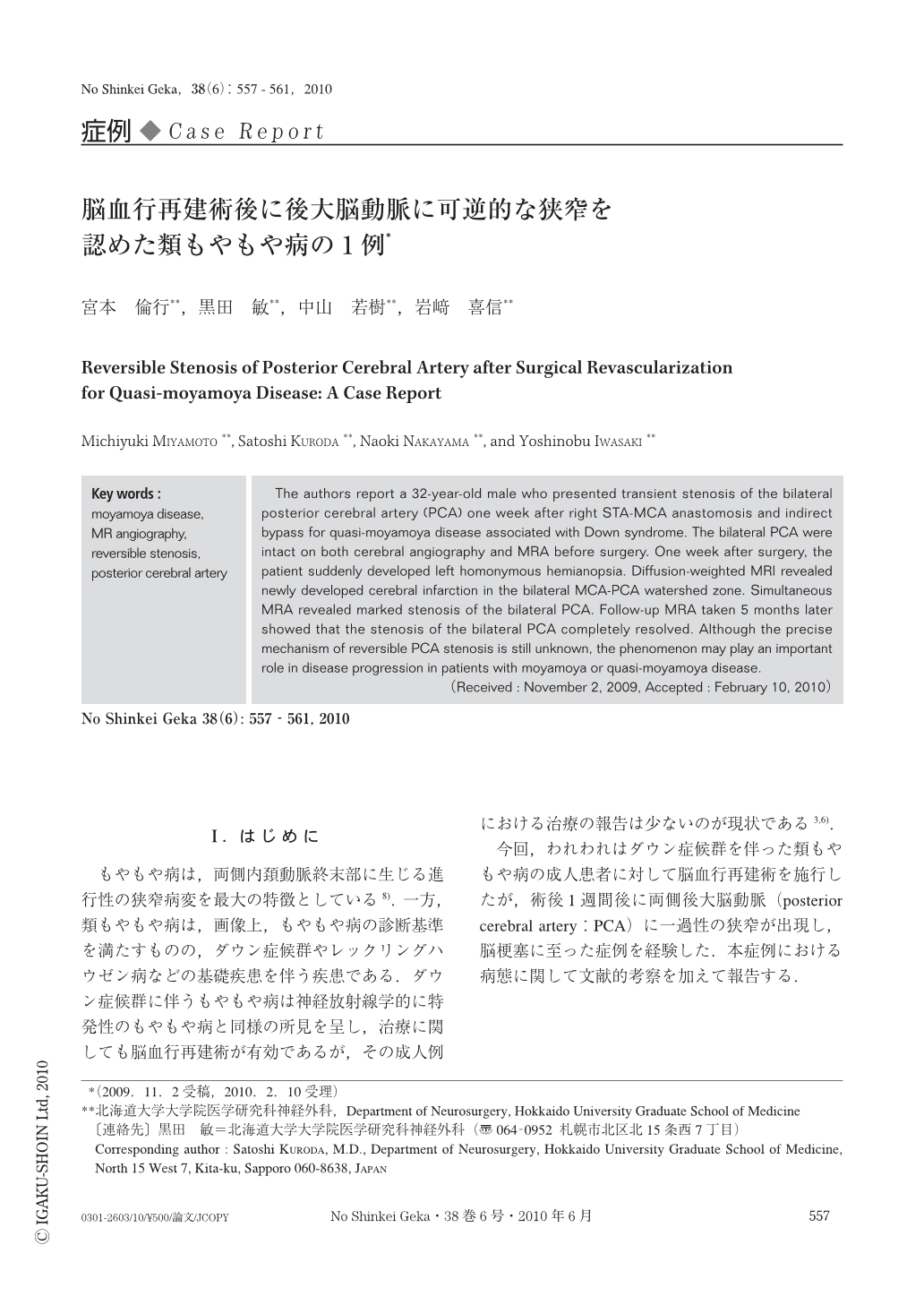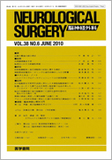Japanese
English
- 有料閲覧
- Abstract 文献概要
- 1ページ目 Look Inside
- 参考文献 Reference
Ⅰ.はじめに
もやもや病は,両側内頚動脈終末部に生じる進行性の狭窄病変を最大の特徴としている8).一方,類もやもや病は,画像上,もやもや病の診断基準を満たすものの,ダウン症候群やレックリングハウゼン病などの基礎疾患を伴う疾患である.ダウン症候群に伴うもやもや病は神経放射線学的に特発性のもやもや病と同様の所見を呈し,治療に関しても脳血行再建術が有効であるが,その成人例における治療の報告は少ないのが現状である3,6).
今回,われわれはダウン症候群を伴った類もやもや病の成人患者に対して脳血行再建術を施行したが,術後1週間後に両側後大脳動脈(posterior cerebral artery:PCA)に一過性の狭窄が出現し,脳梗塞に至った症例を経験した.本症例における病態に関して文献的考察を加えて報告する.
The authors report a 32-year-old male who presented transient stenosis of the bilateral posterior cerebral artery (PCA) one week after right STA-MCA anastomosis and indirect bypass for quasi-moyamoya disease associated with Down syndrome. The bilateral PCA were intact on both cerebral angiography and MRA before surgery. One week after surgery,the patient suddenly developed left homonymous hemianopsia. Diffusion-weighted MRI revealed newly developed cerebral infarction in the bilateral MCA-PCA watershed zone. Simultaneous MRA revealed marked stenosis of the bilateral PCA. Follow-up MRA taken 5 months later showed that the stenosis of the bilateral PCA completely resolved. Although the precise mechanism of reversible PCA stenosis is still unknown,the phenomenon may play an important role in disease progression in patients with moyamoya or quasi-moyamoya disease.

Copyright © 2010, Igaku-Shoin Ltd. All rights reserved.


